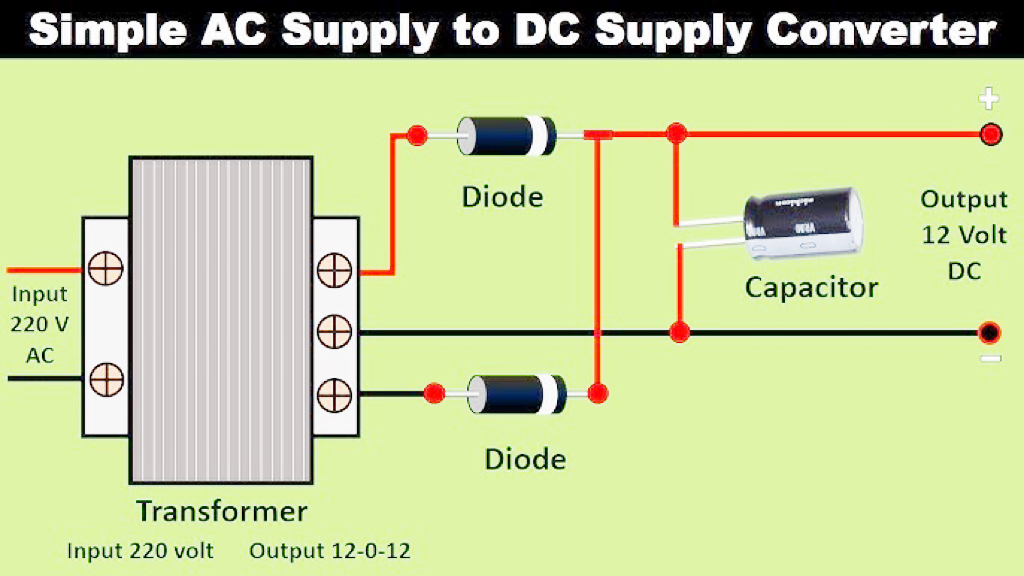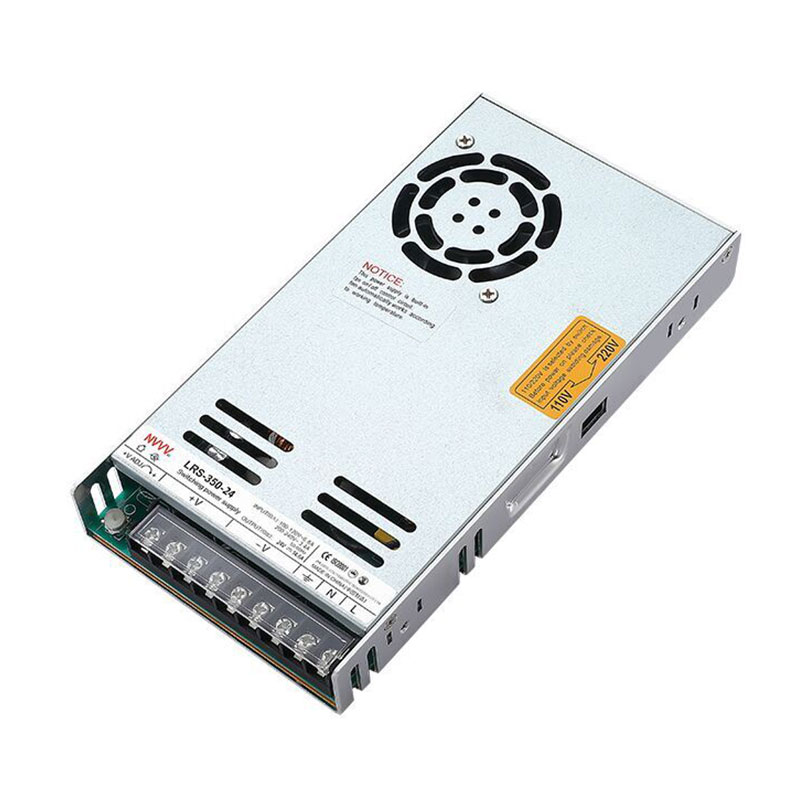What is the main advantage of using an SMPS over a traditional linear power supply?
In modern power supply technology, switching mode power supply (SMPS) and traditional linear power supply are two widely used power conversion technologies. With the growing demand for efficient, compact and stable power supply in electronic devices, SMPS has gradually replaced linear power supply in many industries. Although linear power supply still has advantages in some applications, SMPS has become the mainstream power conversion method in modern electronic devices with its high efficiency, low volume and flexible design. So, what is the main advantage of SMPS over traditional linear power supply? This article will discuss this issue in detail from multiple angles.
What is a switching power supply (SMPS) and a traditional linear power supply?
Working principle of switching power supply (SMPS)
A switching power supply is a power supply device that controls voltage and current by switching electronic switches at high speed. Its core working principle is to convert the voltage of the input power supply into the desired output voltage through frequent switching actions. SMPS is mainly composed of rectifier filter, high-frequency switching circuit, transformer and output regulator. Through the switching of high-frequency switches and feedback control, SMPS can effectively regulate the output voltage and current and minimize energy loss.
Working principle of traditional linear power supply
Unlike SMPS, traditional linear power supply regulates the output voltage through linear regulator. Its working principle is relatively simple, and the voltage regulation is achieved by converting excess energy into heat. This means that in linear power supply, the energy of voltage difference is not used efficiently, but is wasted in the form of heat. The regulating element in the linear power supply is always in working state, with large energy loss and low efficiency.
How is the high efficiency of switching power supply achieved?
Energy conversion efficiency of switching power supply
The biggest advantage of switching power supply is its efficient energy conversion capability. SMPS minimizes the loss during power transmission by switching the switching element between the on and off states. Compared with the linear power supply that needs to convert the excess voltage into heat energy for regulation, SMPS directly converts this energy into useful output power through efficient control of switching action. This greatly reduces the waste of electrical energy, allowing SMPS to show excellent efficiency in various applications.
High-frequency operation reduces power loss
SMPS converts high-power input voltage into required output voltage by switching at high frequency (usually between 20kHz and several hundred kHz). High-frequency switching not only greatly improves conversion efficiency, but also allows components such as transformers and inductors to be smaller in size, thereby further reducing energy loss. Compared with linear power supplies that can only reduce voltage through linear regulators, SMPS has a more flexible switching mechanism and reduces excessive heat generation.
Application of power factor correction (PFC) technology
In order to further improve energy efficiency, SMPS is usually equipped with power factor correction (PFC) function. PFC is a technology that synchronizes the input current and voltage by controlling the phase. Traditional linear power supplies usually have low power factor problems at high power output, which increases the load on the power grid and leads to reduced system efficiency. SMPS's PFC technology can effectively improve the power factor, reduce power waste, and ensure the stability of the power system.
What are the advantages of switching power supplies in terms of volume and weight?
Miniaturization and Lightweight Design
Since switched mode power supply uses high-frequency switching technology, internal components such as transformers and filters can be greatly reduced in size. Compared with linear power supplies that must use larger transformers to achieve voltage conversion, the high-frequency operation of SMPS allows the use of small transformers to accomplish the same task. Therefore, SMPS is generally more compact and lighter than traditional linear power supplies. This has huge advantages for application scenarios that need to save space or weight, especially in portable electronic devices, medical devices, and aerospace.
For example, a school network laptop charging cabinet needs to charge a large number of devices at the same time, and space and efficiency are key considerations. The miniaturization design of SMPS allows the charging cabinet to accommodate more power modules and provide power support for multiple devices without increasing the volume. Similarly, SMPS has also been widely used in precision equipment such as 3D printers and embroidery machines. Its compact size and efficient energy conversion enable these devices to work stably for a long time.
Application flexibility brought by weight reduction
Since SMPS is light in weight, it is particularly suitable for applications that require efficient power but have strict requirements on volume and weight. Modern handheld devices, portable instruments, medical equipment, and spacecraft all use SMPS extensively. Traditional linear power supplies require large heat sinks and transformers, and are heavy and bulky, which makes them difficult to use in situations where portability is required. SMPS, on the other hand, uses miniaturized design to make devices lighter and more widely used.
Comparison of the advantages of switching power supplies and linear power supplies in different application scenarios
Applications in high-power situations: industrial equipment and data centers
SMPS has significant advantages in high-power applications, especially in situations such as industrial equipment and data centers where power stability and energy efficiency are required. Due to the high efficiency and low energy loss of SMPS, it is widely used in these scenarios. Especially in data centers, energy costs are a very important consideration. SMPS greatly reduces the operating costs of data centers by reducing power consumption and heat dissipation requirements.
Linear power supplies usually perform poorly in high-power applications. As power output increases, the energy loss of linear power supplies will also increase significantly, and the heat dissipation problem will become more serious. Therefore, in most modern high-power applications, switch mode power supply has gradually replaced linear power supplies.
Applications in precision equipment and low-noise scenarios
Although SMPS operates at high-frequency switching, electromagnetic interference (EMI) can be controlled at a low level through optimized design. This makes SMPS widely used in precision equipment with high requirements for power supply stability and low noise. For equipment such as 3D printers and embroidery machines, which need to run for a long time and have high requirements for power supply noise and stability, SMPS can provide stable and efficient power supply.
In addition, in some environments that are sensitive to electronic noise, such as medical equipment and high-end audio equipment, an optimized SMPS can provide low-noise power supply to ensure the normal operation of the equipment.
Advantages in portable devices and household appliances
Another important application area of switching power supplies is portable devices and household appliances. Due to the advantages of small size, light weight and high energy efficiency, SMPS has become an ideal choice for household appliances such as smartphones, laptops, and TVs. For example, the common power adapters in household appliances are almost all designed with SMPS (one of the 24vdc power supply) , which not only improves the portability of the product, but also improves its energy efficiency.
For outdoor automation equipment such as watering machines, since they need to run for a long time and rely on battery power, the efficient energy conversion and miniaturized design of SMPS make it the preferred power supply solution for these applications.
What are the design challenges and optimization directions of using SMPS?
Optimization of electromagnetic interference (EMI)
Although SMPS has high efficiency and flexible design, its high-speed switching operation also brings about the problem of electromagnetic interference. Especially when working at high frequency, switching noise may affect the normal operation of other electronic devices. Therefore, the design of SMPS usually needs to consider how to reduce EMI through shielding, filtering and layout optimization. Engineers need to strike a balance between efficiency and EMI to ensure stable operation of the system.
Reliability and cost control of power supply
Compared with linear power supply, SMPS has higher design complexity, involving multiple high-speed switching elements, feedback control circuits and EMI optimization design. Therefore, the initial R&D cost of SMPS is relatively high. In addition, SMPS has more circuit components, which also puts higher requirements on reliability. However, with the advancement of technology, the production cost of SMPS is gradually decreasing, and the reliability of design is also improving.
Nevertheless, linear power supply is still suitable for some cost-sensitive applications that do not require high energy efficiency. For simple low-power applications, linear power supply has low design and maintenance costs and still has a certain market demand.、
Conclusion
In general, the switching power supply (SMPS) has significant advantages over the traditional linear power supply, especially in high efficiency, miniaturization and wide application scenarios. SMPS has replaced the traditional linear power supply in many modern electronic devices due to its efficient energy conversion capability, flexible design and miniaturization advantages. Whether in high-power industrial applications, portable devices, or in precision equipment and low-noise application scenarios, SMPS has demonstrated its unique advantages.











